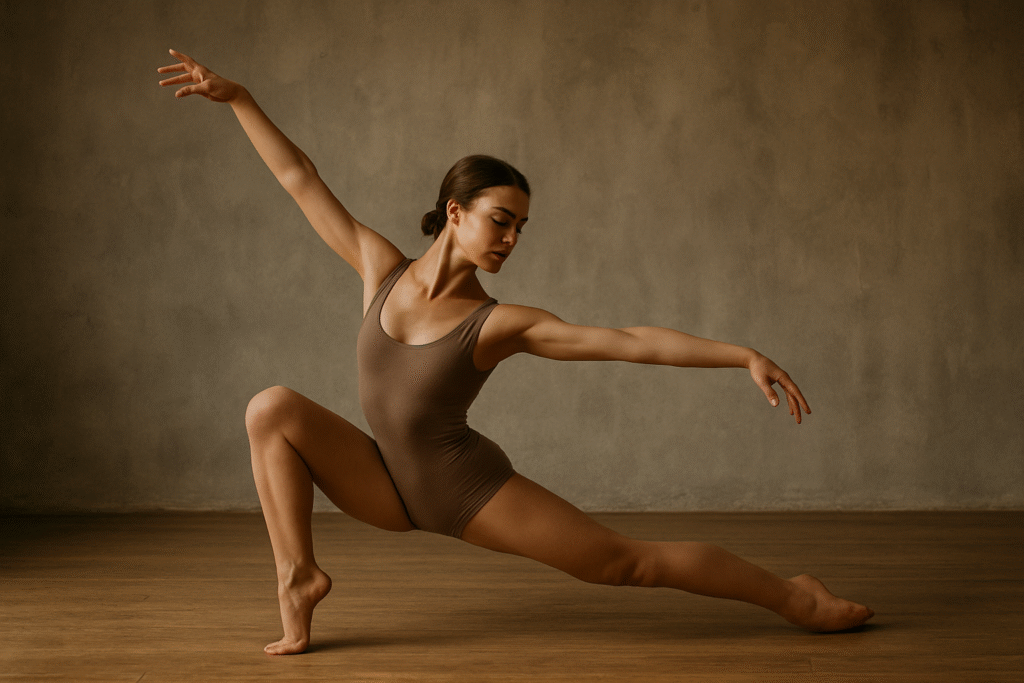
Fluid, expressive, and ever-evolving—contemporary dance is the art of movement without limits. Blending elements of ballet, modern, jazz, and even street styles, contemporary dance breaks boundaries to create a form that is deeply emotional, highly technical, and profoundly human.
At once artistic and athletic, contemporary dance encourages dancers to explore the full range of motion, emotion, and storytelling through the body. Whether performed on stage or in a studio, it invites freedom, vulnerability, and innovation—making it one of the most powerful forms of dance today.
In this guide, we’ll dive into the origins, core principles, techniques, and transformative power of contemporary dance.
What Is Contemporary Dance?
Contemporary dance is a genre of expressive dance that combines elements of several dance styles while rejecting the rigid rules of classical traditions. It emphasizes:
- Emotional expression
- Freedom of movement
- Creative exploration
- Connection between breath, body, and mind
Unlike ballet or ballroom, contemporary dance is not defined by fixed steps or sequences. Instead, it focuses on natural, organic movement, improvisation, and storytelling through the body.
Contemporary can be grounded and gritty, or light and ethereal—sometimes both in the same performance. Dancers often move in and out of the floor, using contractions, spirals, and momentum to explore space and intention.
The Origins of Contemporary Dance
Contemporary dance evolved in the mid-20th century, building upon the foundations of modern dance pioneers like Martha Graham, Isadora Duncan, and Merce Cunningham. These innovators broke away from the strict formality of ballet to create dance that was more expressive, grounded, and reflective of real human experience.
In the decades that followed, choreographers like Pina Bausch, Ohad Naharin, and Crystal Pite pushed the genre even further, blending theatricality, spoken word, multimedia, and abstraction into their works.
Today, contemporary is a global phenomenon taught in conservatories, universities, studios, and performed on stages and in films around the world.
Contemporary Dance Techniques and Influences
Contemporary dance pulls from a wide range of influences and styles. Here are some of the key components and methods used in contemporary training:
1. Floor Work
Contemporary dancers frequently move to and from the floor with fluidity. Floor work emphasizes weight transfer, core strength, and graceful transitions through rolls, slides, and grounded movement.
2. Improvisation
Improvisation is central to contemporary dance. Dancers explore instinctual movement, often responding to music, prompts, emotions, or even silence. It encourages individuality and spontaneity.
3. Breath and Release
Breathing guides movement in contemporary dance. Techniques like fall and recovery or contraction and release (inspired by Graham technique) help dancers explore tension, softness, and emotional nuance.
4. Ballet and Modern Foundations
While contemporary is freer than ballet, it often includes classical training. Turns, extensions, and lines are frequently used alongside grounded modern techniques.
5. Contact Improvisation
This involves sharing weight and initiating movement through physical contact with a partner. It’s often used in duets or ensemble work to explore trust, gravity, and shared momentum.
6. Body Awareness and Somatics
Contemporary dancers develop a strong connection to anatomy, posture, and internal sensation through practices like yoga, Pilates, and Alexander Technique.
Styles and Variations
Contemporary is not a single style—it’s a fusion. You’ll find choreographers and companies blending contemporary with:
- Hip-hop (urban contemporary)
- Ballet (contemporary ballet)
- Jazz and theater
- Cultural and folk dance influences
- Multimedia and digital performance art
This flexibility makes contemporary dance a mirror of the modern world—diverse, borderless, and deeply expressive.
Why Learn Contemporary Dance?
Contemporary dance offers unique physical, emotional, and creative benefits that appeal to dancers of all backgrounds and levels.
Benefits of Contemporary Dance:
- Creative Expression: Encourages dancers to interpret music, emotion, and themes through movement.
- Mind-Body Awareness: Enhances posture, balance, control, and breath connection.
- Emotional Release: Provides a safe space to explore personal experiences and emotions.
- Versatility: Builds a foundation useful in professional dance, choreography, acting, and physical theater.
- Inclusivity: Accessible to dancers of all ages, body types, and abilities—emphasis is placed on authenticity over aesthetics.
Contemporary in Performance and Media
Contemporary dance has flourished on stage and screen, captivating audiences with its emotional depth and visual poetry.
On Stage:
- Companies like Alvin Ailey American Dance Theater, Nederlands Dans Theater (NDT), and Batsheva Dance Company push the genre forward with innovative choreography.
- Performances often feature themes of identity, trauma, love, politics, and transformation.
On Screen:
- Contemporary is featured heavily on shows like So You Think You Can Dance and World of Dance.
- Choreographers such as Mia Michaels, Travis Wall, and Sidi Larbi Cherkaoui have brought contemporary to a wider audience through film and TV.
Contemporary’s emotional storytelling and visual impact make it ideal for modern audiences seeking depth, artistry, and connection.
Getting Started with Contemporary Dance
Ready to explore the expressive world of contemporary dance? Here’s how to begin:
- Join a Beginner Class: Most studios offer contemporary for all levels—no ballet experience required.
- Focus on Movement Quality: It’s not just about steps—it’s about how you move, breathe, and express.
- Explore Improvisation: Don’t be afraid to move freely and let go of perfection.
- Watch Live and Online Performances: Study different choreographers to understand the breadth of the style.
- Practice Floor Work Safely: Use mats or dance flooring to develop control and fluidity.
You don’t need expensive gear—just comfortable clothes, bare feet or dance socks, and an open mind.
Contemporary dance is movement that speaks. It’s a language of the body that transcends technique and dives deep into human experience. Whether you’re dancing to release, to create, or to connect, contemporary welcomes your story, your emotion, and your voice.
